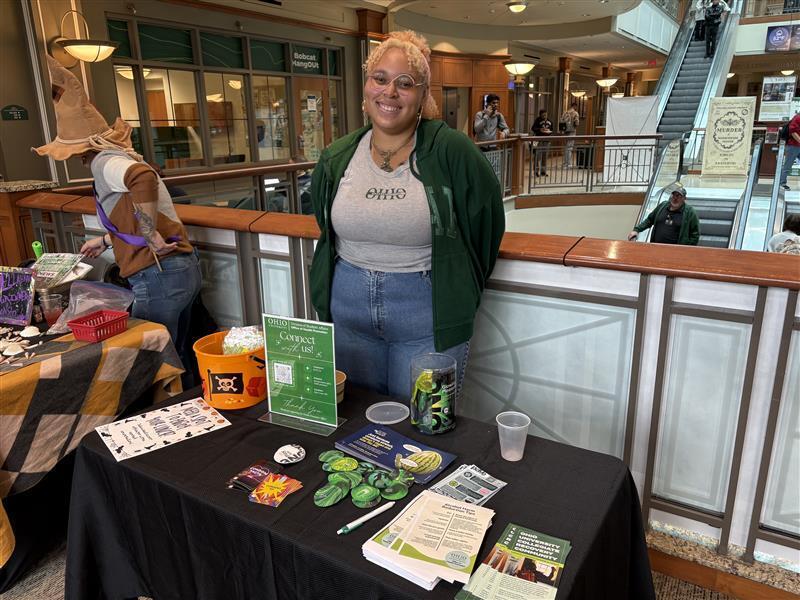When used consistently and correctly, condoms are up to 98% effective in protecting against unintended pregnancy (formerly known as unplanned pregnancy) and the transmission of sexually transmitted infections (like gonorrhea, chlamydia, syphilis and HIV). One thing we know about life is that people sometimes make mistakes, accidents happen and nobody is perfect! A broken condom can be caused by a variety of factors, such as common condom use errors, condom sizes, and oil-based lubricants.
That’s where the term “condom failure” comes in. Condom failure means anything that might cause the protection condoms provide to fail, like breaking, leaking or slipping off during penetrative sexual activity. Your condom fit is an important factor.
So, what should you do when you experience condom failure? We’ve got you covered with what to do if you experience condom failure! There are steps that you can take right away, and others that require a little more lead time.
Important to note: Here at ONE Condoms, we take the quality of our products – and the health and safety of our customers – very seriously. When a breakage incident happens with our products, we investigate each instance.
Key Takeaways (TL;DR) Condom breakage or failure
- Condoms can break, leak, or slip for various reasons including improper storage, opening the condom with something sharp, oil-based lube or improper condom fit.
- If you notice that a condom is broken after use, it is important to take stock of your emotions and come up with a game plan.
- If you are at risk of unintended pregnancy, you can consider taking an emergency contraception (or "morning after") pill. You will also want to think about the risk of STI transmission and consider getting tested.
- After taking these measures, continue to monitor your health and consider getting a few more rounds of testing for STIs to account for any long-standing viral incubation.
Why Do Condoms Break?
There are many reasons a condom may fail, so it is incredibly important to make sure you are following proper condom use instructions. Condom failure can occur due to:
- Improper storage - Store condoms in a cool, dry place and avoid exposure to direct sunlight.
- Using the wrong lubricant - Oil-based products (such as Vaseline or coconut oil) break down latex molecules, making a latex condom likely to break.
- Opening the condom with something sharp - If you use teeth or scissors to open a condom, you may accidentally cut the condom. Use your fingers instead.
- Not using additional lube - Most condoms already come pre-lubricated. However, always use additional lubricant with condoms. This helps with pleasure, comfort, and helps prevent condoms from breaking during use.
- Using an expired condom - Always check the expiration date on the back of the condom!
- Using an ill-fitting condom - When a condom is too long or too loose, this contributes to condom slippage. When a condom is too tight it can contribute to breakage. If you struggle with condom fit, check out our MyONE® Custom Fit® line of 52 condom sizes. MyONE has sizes snugger and larger than any other brand, and you can order a sample kit before you buy!
- Putting the condom on in the middle of sex - Always put a condom on prior to any sexual contact! Lesions, pre-ejaculate secretions, semen, vagina secretions and blood can all transmit infectious organisms.
What To Do If Your Condom Breaks
Immediately after noticing that a condom is damaged or has slipped off, you should do the following:
Remember that Accidents Happen
Try not to blame yourself! Accidents happen and there are steps to take to manage risk and avoid short term or long-term consequences.
Use the Bathroom
Once you notice that the condom is damaged or has slipped off, press pause on the sexual experience, and let your partner know what has happened. Try to remove any lingering fluids from your body, and use the bathroom. We know this sounds a little odd, but there’s a scientific reason!
By “flushing” out any remaining fluids, you can try and feel more comfortable and remove bacteria, including the bacteria that causes urinary tract infections (UTIs). While this will not protect against pregnancy, by sitting on the toilet and flexing your genital or anal muscles, or peeing, this is a great first step.
Wash Up
Our bodies are truly a biological work of art, designed to be self cleaning after sexual activity. That being said, a quick rinse or shower can help you feel more at ease.
It is not recommended to douche, though. In an interesting twist, douching products can actually irritate or inflame sensitive tissue in your body and increase the risk of infection. Bad news!
Take Stock of Your Emotions
With condom failure, it can be very easy to experience a sort of spiraling sense of dread or to let your imagination conjure up various “what if” scenarios. Right about at this point, it’s a good idea to check in and just take stock of how you’re feeling, speak with your partner and confide in a close friend or family member for support.
But don’t worry, if you don’t feel comfortable, you can also speak to trained experts at Planned Parenthood or the National Coalition for Sexual Health for help.
Come Up With A Game Plan

There are a number of options for how to proceed once you have experienced condom failure. This is a good time to come up with a game plan for what course of action makes sense for you and your body.
There’s tons of great online resources to conduct some basic research! Firstly, you’ll want to consider whether or not you need emergency contraception (EC), also known as the morning after pill. The great news is: emergency contraception is now available in the United States and Canada over the counter, so you do not need to get a prescription from your doctor.
Not everyone is at risk of an unplanned pregnancy, but you’ll also want to think about the risk of STI transmission. The only way to know if you have contracted an STI is through testing, which can be done at a doctor’s office or a clinic. Make sure you research where you can have an STI screening done in your local area, and whether or not you need an appointment. For this, it’s recommended to aim to be tested about two weeks after potential exposure.
PEP stands for post-exposure prophylaxis, which is a short course of HIV medicines taken very soon after a possible exposure to HIV to prevent the virus from taking hold in your body. You must start it within 72 hours (3 days) after a possible exposure to HIV, or it won’t work. Every hour counts! Learn more about PEP through the CDC.
Monitor Your Health
Ok, so now you have a game plan! What can you do next, you wonder? Now, you are on symptom watch, monitoring any changes in your well-being, with a special focus on any areas where you fear you may have been exposed.
While many STIs do not show any symptoms (and why getting tested is so important!), you may also notice some more minor (though still unpleasant) symptoms like soreness, itchiness, smelly discharge or pain while peeing. After condom failure, it is important to monitor any symptoms you may be experiencing as this can help medical professionals help assess and diagnose any STIs.
Three to Five Days After Condom Failure

After the initial breakage, there are some steps you will want to follow in the next 3-5 days including:
Continue Your Game plan, Keep Monitoring Your Health
Within the first 3 days of experiencing condom failure, you’ll want to maintain some of the original steps that you started taking right away.
Specifically, you’ll want to continue checking the boxes for your personal game plan and to make sure you are monitoring any symptoms or changes in your health that occur.
Meeting Medication Timelines
With this next phase of steps, timing is everything! With the emotions surrounding condom failure, it can be easy to lose track, so you will want to make sure you are keeping tabs on timelines.
Just why does timing matter? Both emergency contraception (EC) and medication (PEP) to prevent the transmission of HIV are recommended to be taken within 72 hours of potential exposure.
Emergency Contraception Pills
If you need to take EC, it can be purchased from most pharmacies or drug stores without a prescription, so once you have your game plan, all you need to do is follow the steps. You are encouraged to take EC as soon as possible, as this reduces the risk of pregnancy significantly.
There are a number of options with EC, including Plan B (or similar medications), ella (another pill, which can work up to within 5 days) or ParaGard intrauterine device (or IUD, also effective up to 5 days). Plan B and similar medications generally cost about $30-$50, and is available over-the-counter at most pharmacies. Ella and ParaGard IUD will require a doctor’s appointment. ParaGard IUD can also be used as a long-term birth control method.
Post-Exposure Prophylaxis
If you’re worried that you may have been exposed to HIV, you are encouraged to take post-exposure prophylaxis (PEP) which can reduce your risk of developing an HIV infection. PEP is the lesser known cousin of PrEP (pre-exposure prophylaxis), which is a medication prescribed to many to prevent HIV transmission in advance through daily medication.
Basically, PEP is a combination of drugs (called antiretrovirals) designed to block the HIV virus from duplicating itself in the body. Similar to EC, you will want to take PEP as soon as possible.
Two to Three Weeks After Condom Failure

Don’t Forget to Keep Monitoring Your Health!
After a few weeks it is still important to make sure you’re monitoring your health for the appearance of any unwelcome symptoms, and scheduling an STI screening! Some highlights (or lowlights, more appropriately) to look out for include: unpleasant discharge, pain while peeing, bleeding after sex and/or between periods, missed periods and discomfort in the throat, stomach or testicles. Longer term, these infections can even lead to fertility issues without treatment!
Testing, Testing, 1, 2, 3!
About 2-3 weeks after condom failure is the ideal time to schedule your STI and pregnancy screenings, depending on what you’re most concerned about.
Experts actually recommend to be tested for gonorrhea and chlamydia specifically after about two weeks, as this is believed to provide the most reliable results. If you receive a positive test for either gonorrhea or chlamydia, the good news is that doctors can treat either of these infections with antibiotics.
About three weeks after condom failure, you’ll also want to take a pregnancy test, if you fear that you are at risk of unintended pregnancy. Why three weeks? This is because standard pregnancy tests measure hormone levels that require a few weeks to appear.
This is also when you’ll want to get tested for genital herpes and HIV, as these both require a lengthy incubation period.
Anxious about testing? You’re not alone. The medical professional administering the exam will explain what testing will involve, and what the results mean for your long term health outlook.
Six Weeks to Three Months
Last Rounds of Testing
So by this point, you’ve monitored any symptoms, taken any medications to prevent pregnancy or HIV transmission, completed a pregnancy test and been screened for gonorrhea, chlamydia, genital herpes and HIV. You’re almost there, just one more test: syphilis!
Syphilis is notoriously difficult to spot, and often does not have any symptoms, despite being one of the more serious STIs as far as long term health problems. Symptoms, if they do appear, can vary from small sores around your crotch or mouth to fever, headaches and joint pain. Testing is encouraged at six weeks because the results are most reliable, and this too can be treated through antibiotics.
Want the peace of mind of knowing that you have not contracted any STIs? Consider getting tested for all STIs once more at the three month mark just to be absolutely certain. In the case of syphilis and HIV, you can also get tested at six months again to account for any long-standing viral incubation. Knowledge is power, knowing your results will empower you to live your life with peace of mind, confidence and certainty! Getting tested means you are in the know, and can get the appropriate treatment as needed.
Wrapping Up (wink)
And there it is – those are the recommended steps for what to do if you experience condom failure! If you break it up by days, weeks and months in your game plan, you’re already on your way to maintaining your sexual health responsibly and proactively.
Browse on over to peruse some of our premium ONE lubricants, award-winning ONE condoms and even custom sized condoms.
FAQs
How can you tell if a condom breaks?
Oftentimes you will be able to feel or see if a condom tears or rips, but not always. This is why it is so important to store condoms properly and use them consistently and correctly!
What are the chances of a condom breaking?
When used consistently and correctly, condoms are up to 98% effective. However, the key is that condoms must be used consistently and correctly to maintain their effectiveness.





Share:
Is Petroleum Jelly A Good Sexual Lubricant?
Should I Use A Condom For Oral Sex?